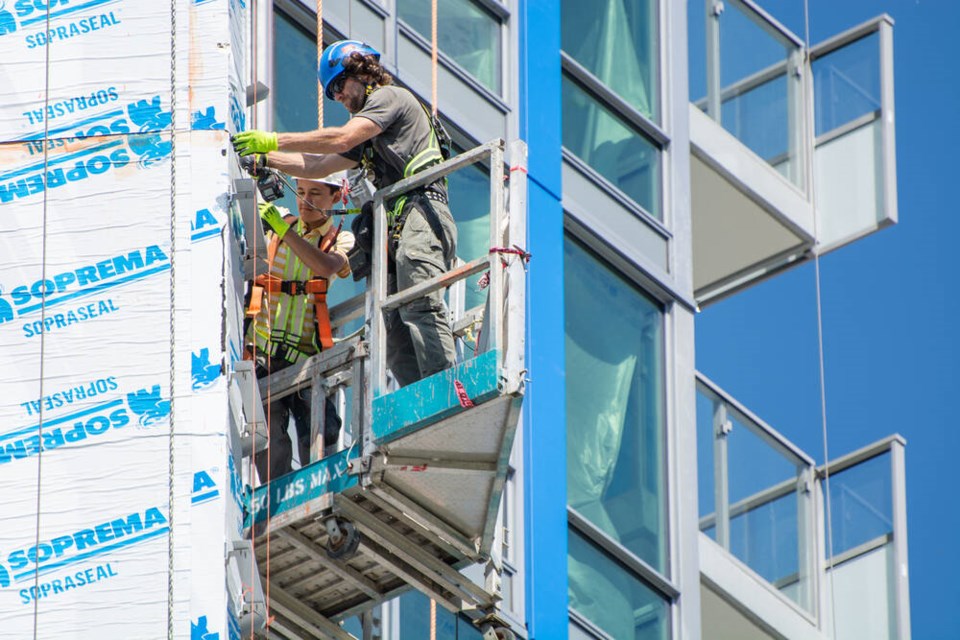Property owners in the District of North Vancouver hoping to add density to their lots in accordance with new provincial rules will have relatively limited options going forward.
At a meeting on June 3, council voted 4-3 in favour of a policy option presented by staff that would allow suites and coach houses on most single-family lots in the district, but would not rezone for additional units as outlined in the provincial legislation.
In a separate but related discussion at the same meeting, council voted to accept a staff report on minimum height and density that must be accepted for residential developments near designated “transit-oriented areas” at Phibbs Exchange and the Capilano University bus loop. Couns. Lisa Muri and Betty Forbes were opposed.
After a heated discussion in district chambers, Couns. Jordan Back, Catherine Pope and Jim Hanson dissented in the vote, saying that the route preferred by the rest of council didn’t align with the intention of the new rules.
Before the vote, staff presented three different options as legal readings of the legislation, which comes into effect June 30. Option A would only allow secondary suites and coach houses in addition to a principal dwelling on a single-family property.
Option B, the least restrictive option, would allow for what the province is calling small-scale multi-family residential (SSMUH). Up to six units could be built on current single-family lots, including in areas deemed by staff where providing municipal services could be a challenge.
Option C, the choice recommended by staff, was presented as a hybrid approach, where SSMUH options could be built where service upgrades to accommodate more density is considered feasible, but only the three units available in option A where providing services is a challenge.
In all of the scenarios, a maximum of three units could be built on lots subject to wildfire and flood hazards. There are also other exemptions for lots larger than 4,050 square metres and with heritage value, which combined account for around 72 single-family zoned properties, according to a staff report.
Reading a quote from the province, district planning director Dan Milburn said the aim of the SSMUH legislation is to increase housing supply to create more diverse housing choice and over time contribute to more affordable housing in B.C.
Over the next 10 years, that could result in around 130,000 new homes in the province, and in the neighbourhood of 2,246 in the district, Milburn said.
Both options A and C would add capacity for around 17,000 units, a 40-per-cent increase from current levels, while option B would add capacity for 26,500 units, a 60-per-cent increase, Milburn said.
Provincial housing rules sever growth from infrastructure, mayor says
Coun. Catherine Pope said the district has done a “lousy job” of meeting housing demand.
“People cannot afford to live here,” she said. “That’s why we have labour shortages. That is why we have traffic congestion.
“I’ve heard some on this council say we can’t do this, that the infrastructure won’t support it…. No one expects there’s going to be a stampede of homeowners rushing to build fourplexes,” she added.
Most residents want to accommodate their children, or allow seniors to age in place in a community of tiny homes, Pope said. “So to put up barriers at this stage is disingenuous and defies the intent of the legislation.”
Pope was in favour of option B, along with Back.
Hanson advocated for option C.
“This option respects the goals of the provincial legislation in creating small-scale multi-family housing, while also protecting our community from natural hazards and balancing our capacity to service development,” he said.
The rest of council supported option A.
Mayor Mike Little said he was frustrated with how these regulations have been imposed, “because they represent a severing of growth from infrastructure.”
The district has far exceeded targets outlined in its housing needs report, he said.
“That’s because we’ve been focused on developing our town centres and making sure they’re good options for tenure,” Little said. “But just setting the number on growth anywhere throughout the district, without having it tied to availability of infrastructure, I find that to be irresponsible.”
Coun. Herman Mah said he at first considered option C, but was concerned that the new rules negate much of the district’s work to concentrate density in town centres, where there is infrastructure and transit to support growth.
“I don’t support going with option B,” he said. “The municipality will be left to deal with unintended and negative consequences.”
Mah added that he wanted to see additional housing forms like duplexes and triplexes available for single-family lots.
“My hope is that if option A is passed tonight, council will be willing to look at other forms those additional two dwelling units may take,” he said.




